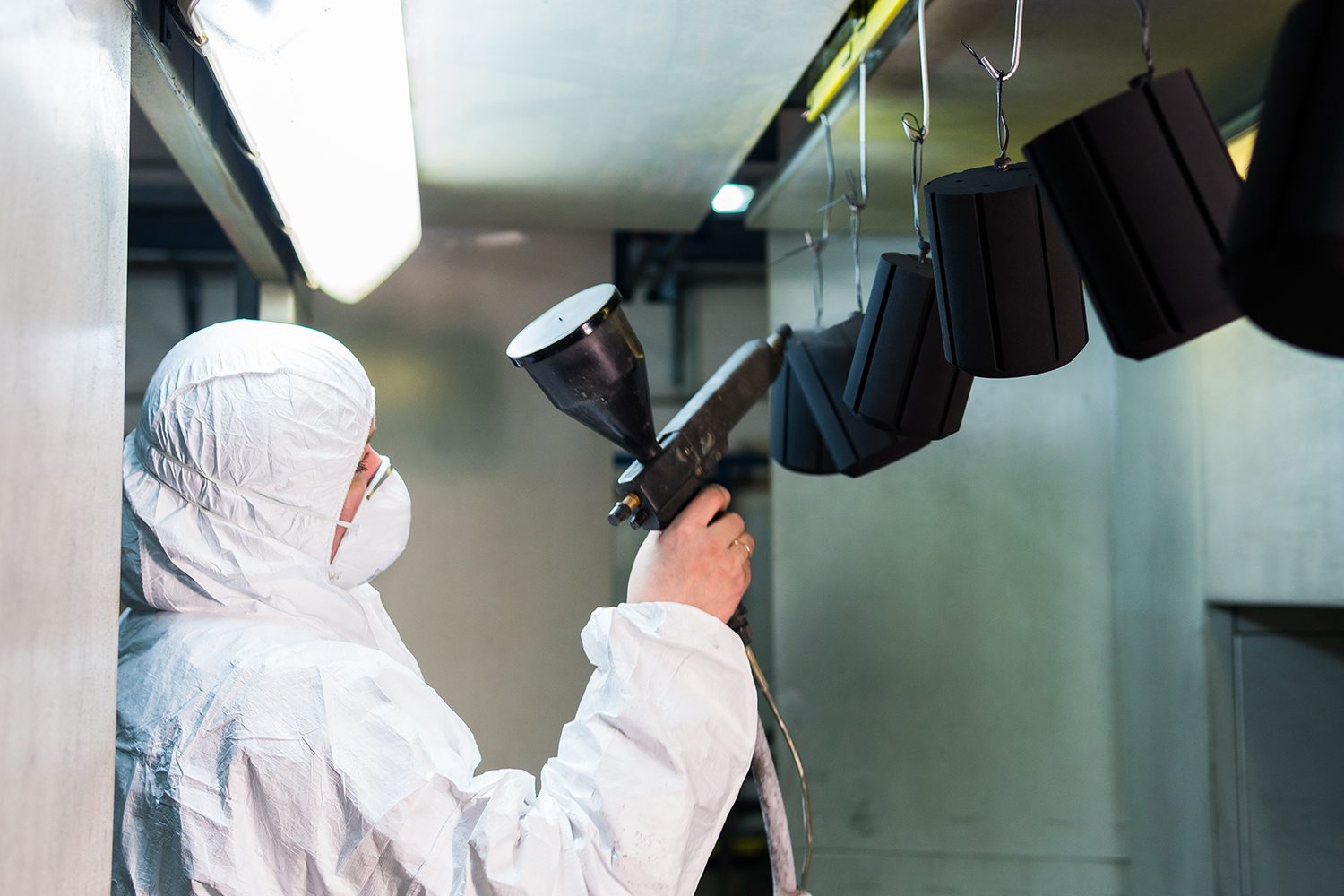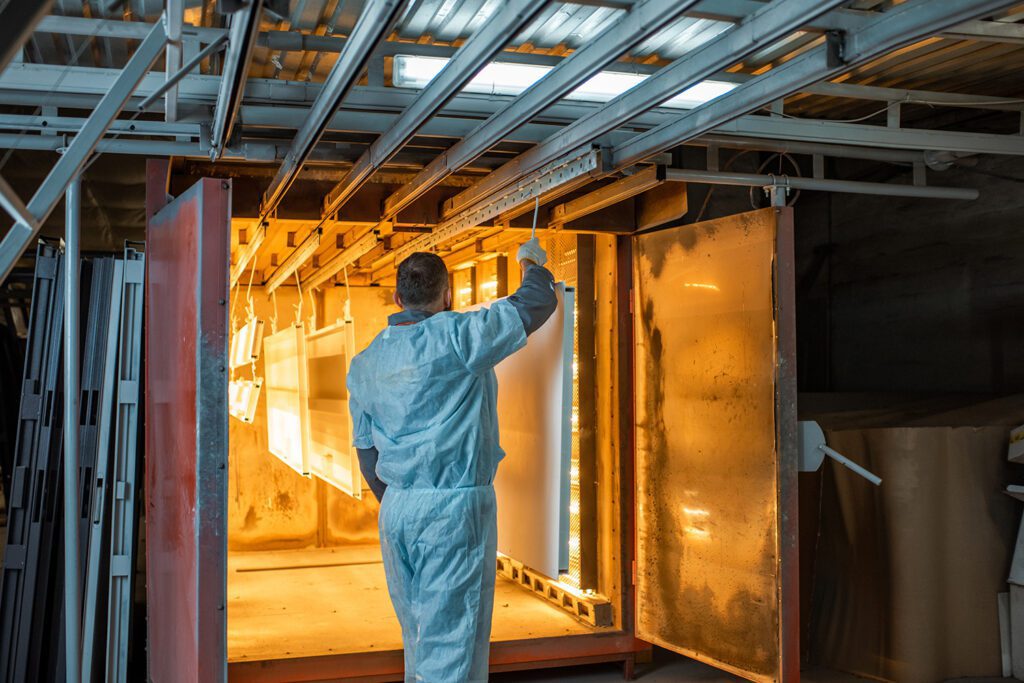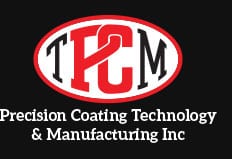How Powder Coating Thickness Impacts Durability & Appearance

When it comes to industrial coatings, getting the thickness right is essential. For engineers, manufacturers, and quality control teams, the thickness of the powder coating can directly affect how well a product performs and how long it lasts. A finish that’s too thin might wear down quickly, while one that’s too thick can crack, peel, or look uneven.
In this blog, we’ll explore what powder coating thickness really means, why it matters for durability and appearance, and how to achieve the best results. Whether you’re designing parts for aerospace, agriculture, or architectural use, understanding the role of coating thickness helps you avoid common issues and ensures your finished product meets expectations.
What Is Powder Coating Thickness?
The thickness of a powder coating refers to how deep the layer is once applied to metal surfaces. It’s usually measured in mils (1 mil = 0.001 inch) or microns. The thickness depends on how the coating is applied—whether through electrostatic spraying, fluid bed powder coating, or other methods—and how it’s cured afterward.
If the coating is too thin, it won’t protect the product well. If it’s too thick, problems like cracking, uneven appearance, or poor powder coating adhesion can happen.
How Does Thickness Affect Durability?
Getting the coating thickness right is key to how well your product holds up over time. Both too little and too much can cause problems, especially in demanding environments.
- Too Thin:
- It may not provide enough protection from moisture, chemicals, or temperature swings.
- It can wear down faster, leading to premature failure of the coating.
- Too Thick:
- Slows down curing times and may delay production.
- It can cause brittleness or cracking, especially when exposed to high heat.
To meet industrial powder coating standards, it’s important that an industrial powder coating manufacturer apply the right thickness for the specific application. This ensures that the coating can withstand extreme temperatures or environments and continues to perform well over time.
What Does Thickness Do to Appearance?

The powder coating thickness can change how your product looks. If the coating is too thin, it might show surface flaws or look uneven or faded. If it’s too thick, it can cause bumps, rough textures like orange peel, or uneven color.
Getting the right thickness helps create a smooth, clean finish. The proper thickness is especially important in industries like architecture, where the product needs to look good and last a long time.
What Are Common Thickness Guidelines for Different Uses?
The right thickness depends on where and how the coated part will be used. To better understand them, here is a table showing the optimal coating thickness guidelines for different applications:
| Application | Thickness Range (mils) | Description |
| General Industrial Parts | 2–4 mils (50–100 microns) | Works well for most manufacturing needs, providing solid protection without bulk. |
| Outdoor Equipment & Farm Machinery | 3–6 mils (75–150 microns) | Helps protect against moisture, dirt, and heavy use in tough environments. |
| Architectural Products | 2.5–3.5 mils (60–90 microns) | Used for products like railings and frames, ensuring durability and aesthetics. |
| Heavy-Duty or Corrosive Environments | 6–10+ mils (150–250+ microns) | Applied for parts exposed to chemicals, saltwater, or extreme wear, often with fluidized bed coating. |
| Grip or Electrical Coatings (Plastisol) | 125–250 mils (3,175–6,350 microns) | Provides cushioning, grip, or insulation for electrical components, often with extra thickness. |
No matter what the application, it’s important to balance function and appearance. A well-measured coating improves performance and meets powder coating quality standards.
How Does Coating Thickness Affect Adhesion?
Powder coating sticks to metal because of an electrostatic charge. However, the thickness of the coating plays a big role in how well it bonds during the powder coating application.
If the coating is too thick, it might not cure all the way through, which can weaken the bond. If it’s too thin, the powder may not fully stick and could peel or chip over time.
To get strong adhesion, it’s important to:
- Prepare the surface properly
- Apply an even layer
- Cure the coating at the right temperature and time
Checking the thickness during the finishing process helps catch any issues early and ensures the coating holds up well.
How Can You Get the Best Coating Results?

If you’re working with a powder coating provider, here’s how to make sure you get strong, lasting results and ensure powder coating durability:
- Share where and how the product will be used—exposure to heat, chemicals, or wear matters.
- Ask about quality checks like measuring coating thickness and cure times.
- Choose the right method for your product design—fluidized bed, electrostatic spraying, PTFE, or plastisol.
- Work with experienced coaters who know the process and can guide you to the right solution.
Why Choose PCTM for Your Powder Coating Needs?
At Precision Coating Technology & Manufacturing (PCTM), we help designers, engineers, and OEMs get high-quality finishes that improve both the look and life of their products. Based in Denver, PA, we focus on smart processes, reliable results, and cost-effective solutions. We understand the importance of achieving the right powder coating thickness for optimal performance.
We know each step in the powder coating process and adjust our approach to meet your goals. Whether you’re building parts for aerospace, agriculture, or architecture, our powder coating services help you get it right without the need for expensive rework.

